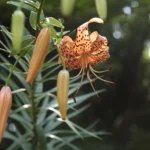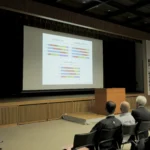By Bill Roberts
This is an edited version of a speech given by Bill Roberts, author of “A Portrait of Oomoto,” at the Oomoto branch in Hiroshima after its monthly service on March 18, 2007.
Konichiwa. Bill Roberts des. Yoroshiku. Onegaishimasu.
I have been to Hiroshima several times, but this is my first visit to your branch. I am honored to be here and attend your monthly service.
I have been to nearly 20 branches since I began visiting them in 2001. Most of the visits were to conduct research for my book, “A Portrait of Oomoto,” published by Tenseisha Press last year. It is now appearing serially in Japanese in Matsugokoro, the monthly publication of the Oomoto Headquarters Youth Division. Each installment is also posted on the home page of Jinrui Aizen-kai (Universal Love and Brotherhood Assocation).
Now that my book is published you might wonder why I still visit branches. There are several reasons I continue to make these visits, talk to Oomoto followers and take photos. I might revise the book someday, and we are thinking about publishing a book of color photos with captions in English, Japanese and Esperanto. These visits also continue to expand my understanding of Oomoto. Although I wrote a book, I learn new things from each encounter.
Since I am in Hiroshima, it seems appropriate to talk about my own encounters with war and peace. But first a little background.
The arts originally brought me to Oomoto.
Nine years ago, in 1998, I began to study ceramics with a teacher in California named Coeleen Kiebert. She had attended Oomoto’s traditional arts seminar for foreigners in the 1980s. One day Coeleen announced she would take a group to Oomoto and showed us photos of Onisaburo’s yowan (scintillating bowls). I had never heard of Oomoto or its Co-Founder, Onisaburo Deguchi. I knew nothing about tea bowls or tea ceremony. But I was captivated by those yowan and wanted to learn more. So I came to Oomoto.
The first visit was in 1999. I returned to Oomoto with Coeleen in 2000 and 2001. Then the International Department invited me to work on several editorial projects. I came for three months in late 2001 and returned each year after as a volunteer. This eventually led to the book project.
I was nearly 50 years old when I first came to Japan, but Japan had always been a part of me. My parents met here after World War II. My father was an Army officer and my mother was a civilian secretary in the occupation. They met in Tokyo and were married there in 1947. My parents traveled widely in Japan, to Hokkaido, Kyoto and elsewhere. They climbed Mount Fuji and had many other experiences they would cherish the rest of their lives.
I was their first child, born in the U.S. in 1950. However, I was conceived in April 1949 about three months before they left Japan. So I was literally “made in Japan,” like those transistor radios that appeared in the U.S. in the 1950s. My first trip to Japan, in April 1999, took place exactly fifty years after I was conceived here.
I have traveled widely and lived in several countries, but Japan’s arts and culture hold me like a magic spell, and this is never stronger than when I visit Oomoto.
When I’m not at Oomoto, I live in Silicon Valley, where I work as a freelance journalist, writing about the electronics industry. Silicon Valley is a nickname for Santa Clara County, California, the birthplace of the semiconductor industry. The main city is San Jose, about 90 kilometers south of San Francisco.
Like I said, the arts first brought me to Oomoto, but in time I understood that Oomoto stands for much more. That’s why the subtitle of my book is: “The Way of Art, Spirit and Peace in the 21st Century.” What I like best about Oomoto is your commitment to the arts. But what I respect most is your commitment to interfaith dialogue as a way to peace.
Oomoto is different from many religions because of its doctrine that “all religions come from the same great source.” As a result you promote respect among religions, and you did so long before interfaith dialogue became more common. Someone much wiser than me once said there can be no world peace until all religions respect each other. The bridge to respect is to be able to talk, which is why interfaith dialogue is essential to peace.
Here in Hiroshima you know a great deal about peace. I’ll never forget the first time I visited the Peace Park. It was during my second trip to Oomoto, in April 2000. A friend and I took a day off from the group schedule so we could go to Hiroshima. The trip was a bit of an adventure because it was my first time on the shinkansen (high-speed train), and the first time I traveled any distance in Japan without a guide or an interpreter.
At the Peace Park, we walked through the museum, watched the films and viewed the displays. It was a gut-wrenching experience.
I probably have a better grasp of history than most Americans. I already knew a lot about America’s use of the atomic bomb and the debate over that decision in my government. I had seen photos of the destruction the atomic bomb had caused.
I had read the classic article by the American John Hersey, which appeared on the first anniversary of the bombing in The New Yorker magazine. It was later published as a book entitled “Hiroshima.” It is still in print and remains an important source for Americans about what happened on Aug. 6, 1945. Hersey told in gripping detail the story of six victims from one section of Hiroshima based on extensive interviews with relatives and friends. For Americans, he put a human face on what was arguably one of mankind’s most inhumane actions.
So I knew a great deal about the bombing of Hiroshima long before I visited the Peace Park museum, and even still I was stunned and speechless on that day in April 2000.
I remember thinking, “every American president should be required by our Constitution to visit this museum.”
After we left the building, my friend and I sat in the warm sun unable to speak or cry or do anything. After a long time, we finally walked around the Peace Park. The park was teeming with life, joy and peace. It was a Saturday in cherry blossom season. Hundreds of families were picnicking and viewing the blossoms. This was a stark contrast to what we had just seen in the museum. I can’t tell you how uplifting it was for my friend and me.
I visited the museum once more and the Peace Park two more times, including yesterday. Both times the museum always had the same effect on me, although the first time was the most profound.
Each time I visited the museum my emotions were exactly like those I had felt at other times in other places. I am grateful I never had to fight in a war. But I have had a peculiar set of encounters with the horrors of war, which most Americans have not had, and maybe not many Japanese either.
When I was 8 years old, my father was transferred to an American army post in Metz, a city in northeastern France. Metz is about 50 kilometers from the city of Verdun, France, the scene of one of the worst battles of World War I. The battle between the French and the Germans lasted 10 months. Casualties were estimated at 540,000 French and 430,000 Germans – altogether nearly a million dead and wounded, a number that is hard to fathom. Neither side won or gained any advantage. Verdun was one of the most brutal and futile events in World War I.
So many men died they just covered the trenches with dirt, turning them into a mass grave. In many places bayonets still stick out of the ground, like rusty thorns sprouting. They built the memorial building over a section of one of the trenches.
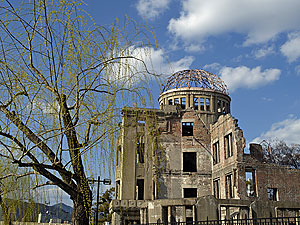
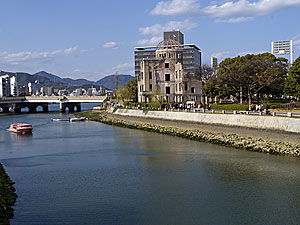
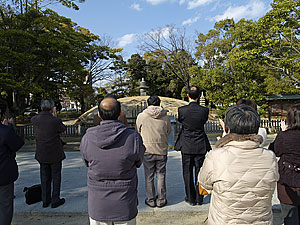
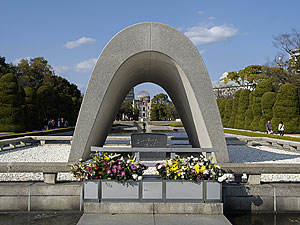
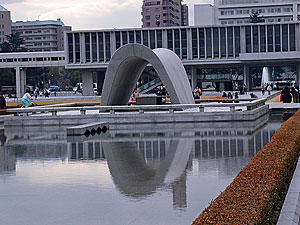
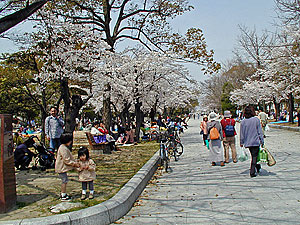
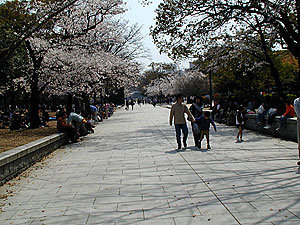

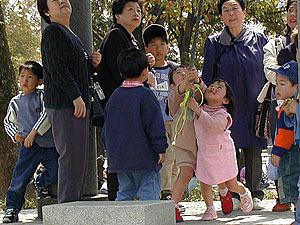
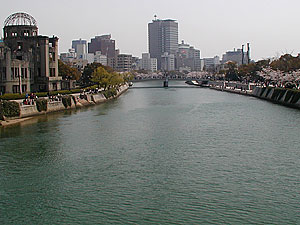
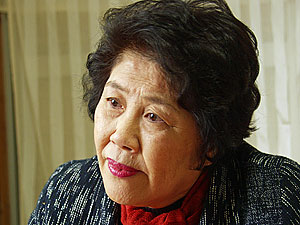
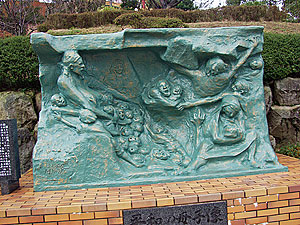
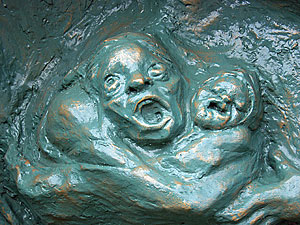
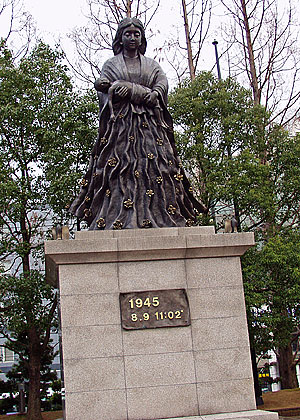
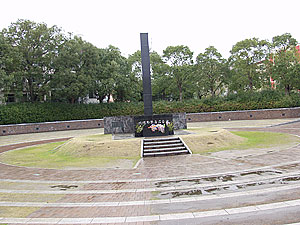
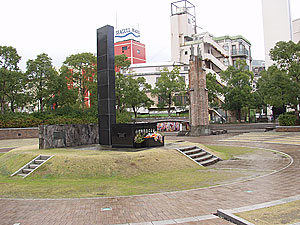
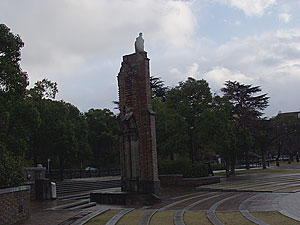
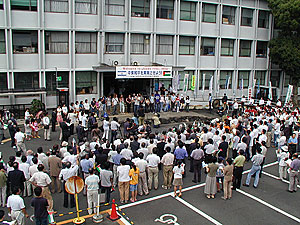
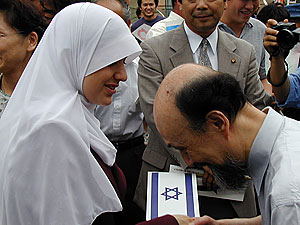
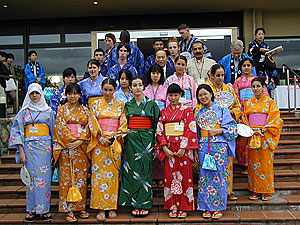
Verdun was one of the first places we visited on a family outing. Being 8 years old, I could barely comprehend the massacre. This was the first time in my young life that I understood that war is brutal and deadly and pointless. That peace is the better option.
During our three years in Europe, I saw other remnants of war.
We visited the site of the allied landing in France on June 6, 1944. The graves of thousands Americans, British and Canadians who died that day are on the bluffs above the Normandy beaches.
We also visited Dachau, one of the World War II concentration camps. It is located outside Munich in a beautiful part of Germany.
At Dachau, the Germans imprisoned Jews, some Catholics, Gypsies, Jehovah’s Witnesses, Communists and other political prisoners, resistance fighters, homosexuals and anyone else they wanted to get rid of – but especially Jews. At first, Dachau was used for forced labor. Later, when the Nazis began the mass killing of Jews, Dachau became one of the extermination sites.
Dachau is now a museum and a memorial. They preserved some of the barracks, and one of the buildings where they sent prisoners for showers. Instead of getting showers they were gassed. Some of the ovens where they cremated the bodies were also preserved.
Again, I came face to face with the horror of war and annihilation.
In Europe we saw many wonderful sights, but my encounters with the reminders of war in places like Verdun, Normandy and Dachau had a bigger impact on my young mind than cathedrals, castles or culture.
Later, I had more encounters with the Holocaust.
I spent a year of college at the Hebrew University in Jerusalem. I am not Jewish; I went there to study Middle East politics. While I was there, I visited Yad Vashem, Israel’s memorial to the millions who died in the Holocaust. Yad Vashem means “the hand of God.”
When I was in Israel 35 years ago, I encountered many Holocaust survivors. I could tell who they were because they still had concentration camp numbers tattooed on their wrists. I saw many such people, but this never affected me much until I met my Israeli roommate’s mother. Originally from Rumania, she was imprisoned in one of the camps, I never asked which one. She visited us once at the dormitory that year, and the first time I saw her tattoo I nearly burst into tears.
Dachau is not a place you need to visit more than once, but I returned about 20 years ago. As an adult, I had the same feelings I had as a boy – a deep sense of grief, anger, disgust and futility.
This is the same way I felt at Hiroshima and later at Nagasaki, which I visited in January 2005.
I went to Nagasaki to do research for my book. I interviewed three atomic bomb survivors, including two Oomoto followers. One of them was Akiko Onitsuka, the branch chief at the time. She was five years old when the city was bombed on Aug. 9, 1945, but she remembered many details, including the fact that her mother stayed home from her job at the shipyard that day, one of the shipyards destroyed in the blast. Had she gone to work, she most likely would have been killed.
The three bomb survivors told me they had forgiven America and, like many people in Hiroshima, had directed their energy into positive peace-related activity. Mrs. Onitsuka had thrown herself into Oomoto work. One man helped collect the stories of survivors on video and in writing. Another dedicated himself to teaching children about what happened.
I toured the atomic bomb museum and hypocenter with Umeo Matsunaga, the missionary for Kyushu at the time. Matsunaga later told me he could feel the angry spirits of those who died in Nagasaki, and that the Spiritual Leader had a similar experience when she visited. The only anger I felt was my own. It was like the anger I felt at the Peace Park, at Dachau and at Yad Vashem. It was like the anger I felt when a buddy of mine was killed by a sniper’s bullet in Vietnam less than a year after we graduated from high school.
It is the same anger I feel toward any nation, including my own, that wields military, political and economic power in ways that foment war. It is the same anger I feel because my country and others continue to build weapons of mass destruction.
Historians will debate forever whether the United States had to drop the atomic bombs to end the war. A case can be made for either side in the argument. However, the argument for using the bomb has become less compelling in light of what we now know from declassified U.S. documents, including cables in July 1945 that some in the Japanese government wanted to discuss surrender.
Like most Americans of my generation, I grew up being told – and believing – that we could only end the war by dropping the bombs. Today I believe we could have found a way to end the war without using weapons of mass destruction or losing thousands of soldiers in an invasion, like we did in France.
The Japanese military committed many atrocities during World War II, including the attack on Pearl Harbor, which took 2,500 lives, mostly American sailors. But the children, women and elderly who were the main victims in Nagasaki and Hiroshima did not deserve to die horrible deaths to atone for Pearl Harbor.
Onisaburo Deguchi had warned your government that its deeds might lead to disasters like Hiroshima, Nagasaki, and the fire bombings of Tokyo. But the government reacted by throwing him in prison.
The 60th anniversary of the bombings came during the summer I was living at Oomoto and writing the book. Around the time of the anniversary, I wrote an opinion article for the Detroit Free Press, a big daily newspaper where I worked for most of the 1980s. I wrote about the three Nagasaki survivors I interviewed, and I questioned whether the atomic bombing was necessary. The reaction from readers was interesting.
I received about 30 emails – which was a lot. The encouraging thing was, about half came from people who agreed with me and said they were glad I had written the article. The other half came from readers who were angry. Some were abusive: They told me not to return to the United States and called me a traitor. In America today, you have to be careful how you talk and write about peace.
One reader was angry but not abusive. He gave a thoughtful argument about why the bombing was needed to end the war. I responded thoughtfully and over the next few days we had an email exchange – a dialogue of sorts — each coming to understand the other’s point of view, even though we did not agree. In America today, we do not have enough of this kind of dialogue about war and peace.
When terrorists attacked the World Trade Center on Sept. 11, 2001, Americans and many others were shocked and outraged. I too was shocked, but not as outraged as many Americans were. I knew that man is capable of far greater destruction and death than what the United States experienced on Sept. 11.
As bad as it was, the carnage of Sept. 11 did not compare to the destruction and tens of thousands of civilian deaths in Hiroshima or Nagasaki. Many Americans might understand this in their minds but since most have not visited Hiroshima or Nagasaki they would not understand in their hearts.
Unfortunately, America’s leaders took advantage of our collective anger over Sept. 11. Through deception and manipulation they harnessed our blind anger and rode it into war against Iraq. We now live with the consequences of our foolish act. Today, a majority of Americans say it was a mistake to invade Iraq, but four years ago a majority supported the war.
I never supported the Iraq war because I believe it is immoral to preemptively attack another country without cause. It was just as wrong for America to attack Iraq in 2003 as it was for Japan to attack the U.S. in 1941. As a practical matter, I also know Middle East history. I knew that getting rid of Saddam Hussein would be easy, but creating peace among all Iraqi factions would be hard if not impossible.
A few prominent Americans voiced this concern, but no one in power listened. Not only did our leaders not listen, they called these people soft on terrorism and unpatriotic.
So we live with the Iraq disaster, and make it worse by sending more troops. In my opinion, George W. Bush can’t leave office soon enough. Unfortunately, he still has nearly two years left. I don’t think Bush ever visited Hiroshima or Dachau. If he had, he might have been a different kind of leader. After he leaves office we will have a big mess to clean up and we will need to reconcile with many nations.
Hiroshima knows a lot about reconciliation. It was the site of one of history’s worst slaughters of civilians, but it did not seek vengeance. Instead, it has worked for reconciliation. You, the citizens of Hiroshima, have transformed it into a city of peace, hosting innumerable events and programs to cultivate reconciliation and nonviolence. I would bet not a week goes by without some peace activity in Hiroshima. And I know the Oomoto branch has been involved in many of these. Peace became your noble cause.
Last November, I attended one of these events — the Hiroshima Peace Summit. Maybe you heard about it or attended. It featured three Nobel Peace Prize winners: the Dalai Lama of Tibet, Archbishop Desmond Tutu of South Africa, and Betty Williams of Belfast, Northern Ireland.
The Dalai Lama, who was awarded the Nobel Prize for nonviolent opposition to China’s occupation of Tibet, talked about the importance of compassion in all human endeavors. Archbishop Tutu, who won the prize for nonviolently opposing the apartheid government in South Africa, talked about reconciliation. After apartheid ended he helped South Africa avoid a blood bath between whites and blacks by setting up reconciliation committees.
Betty Williams received the prize for starting the Northern Ireland peace movement in the 1970s. She opened the first elementary school in Belfast where Catholics and Protestants studied together.
During a question-and-answer session, she said something that underscores the importance of the things Hiroshima does for peace and of Oomoto’s efforts in interfaith dialogue.
The question was something like, “What can individual possibly do to change the world?”
Betty Williams responded: “Do something, do anything. No matter how small, do it. Do it with love and do it with compassion. No action for peace is too small. If you only affect one other person, then it is still worth doing.”
Her words made me think of Oomoto because more than one follower has told me that your efforts in interfaith dialogue are worth doing even if they only touch one other person. This is a beautiful thought. But I think Betty Williams would agree with me that most Oomoto activities actually touch more than one person. Let me mention just a few that I know of. I am sure the Oomoto branch here has been involved in many that I don’t know about.
I witnessed religious leaders of many faiths pray together at the Second Prayer Offering and World Religious Forum, which Oomoto sponsored in Kyoto in 2002. A few days later, many of those same leaders attended the Autumn Grand Festival in Ayabe, and offered prayers at a special service in the Mirokuden.
I have seen Oomoto join with religious leaders outside Japan. Last April, I attended the prayer for peace conference in Washington, D.C., sponsored by the Catholic Sant Egidio organization. Oomoto priests locked arms with Jewish rabbis, Islamic muftis, Catholic priests, Greek Orthodox priests and Protestant ministers as they walked through the streets of the Georgetown district in a show of solidarity for interfaith dialogue.
Within Japan, I have seen Oomoto join with other religions to work on peace-related projects you all believe in: ending the death penalty and world federation, just to name two examples.
I have also seen the efforts Oomoto makes to invite leaders from various religions to address grand festivals and other events — Catholics, Protestants, Jews, Muslims and many others.
In recent years you expanded the invitations to include Middle East experts and government officials, including ambassadors to Japan from Israel, Jordan and Egypt, and the special envoy of the Palestinians.
One Oomoto leader behind these efforts was the late Yasumi Hirose. A lifelong advocate for interfaith activity, he believed that people of different religions need to pray and talk together. When I interviewed him for my book, he recounted with delight his two trips to Mt. Sinai to participate as a priest in interfaith services in 1979 and 1984. Oomoto invited diplomats to speak because Hirose understood the importance of the Middle East to world peace, and he believed that even Oomoto could help create that peace.
The period I lived in Jerusalem, from 1971 to 1972, happened to be one of the most peaceful times in Israel’s turbulent history. A decade later at the Detroit Free Press I was the foreign editor, responsible for international news coverage. Detroit has a sizeable Jewish population and a very large population of Arab immigrants.
So the Detroit Free Press paid a lot of attention to the Middle East, regularly sending our own reporters and photographers there. I supervised and edited several special reports designed to help our readers understand the conflict between Israel and Palestine.
Given my encounters with the Middle East, I was thrilled when I heard that Oomoto was going to bring Israeli and Palestinian youth to Japan. I was happy to get involved with this project, which Hirose wholeheartedly supported.
The Ayabe Project in 2003, hosted by the City of Ayabe, brought seven Israeli and seven Palestinian teenagers to Japan for a week to help them talk, play together and reconcile. Each youth had lost a family member in the conflict. The project was largely financed by small donations from Ayabe citizens, but Oomoto gave the largest single donation and provided staff for the project.
The visitors stayed in Japanese homes and learned traditional arts. They performed some of their own songs and dances for the people of Ayabe. They also had spontaneous — but civil — debates over the sensitive issues that keep them from living in peace.
Following Ayabe’s example, similar projects were undertaken in Okayama in 2004 and in Tokushima in 2005. A project was planned for Kameoka in 2006, but had to be canceled due to the Israeli-Hezbollah war.
I wrote a chapter in my book about the Ayabe Project. Let me share with you comments from two participants.
At the end of the week, one Palestinian youth said he used to hate Israelis, but had changed his mind. “To promote peace and understanding between the two peoples there is a need to start at the beginning with the children. We are the future.”
Six weeks after they returned home, I talked to one of the Israelis by phone. She said, “The biggest impact of the program was getting to know the Palestinian kids. They’re just like us. They’re normal kids.”
I think it is fair to say we will never know the full impact this project had on these kids and the positive ripple effects on their family, friends and the future of the Middle East. The Ayabe Project illustrates the kind of work Oomoto does that can have a powerful effect for peace.
Oomoto has a colorful history, marked by tragedy and triumph. Your commitment to the arts as a spiritual practice is important. Your ritual is colorful and evokes deep feelings. But the interfaith work you do, the message of peace and respect you offer the world are so necessary in our chaotic 21st century.
In our chaotic world Oomoto followers believe religion can be a force for good, even if you only change hearts and minds one person at a time. I hope you never stop thinking this way. It is a noble mission. For this and many other reasons, I am proud to call myself a friend of Oomoto.


